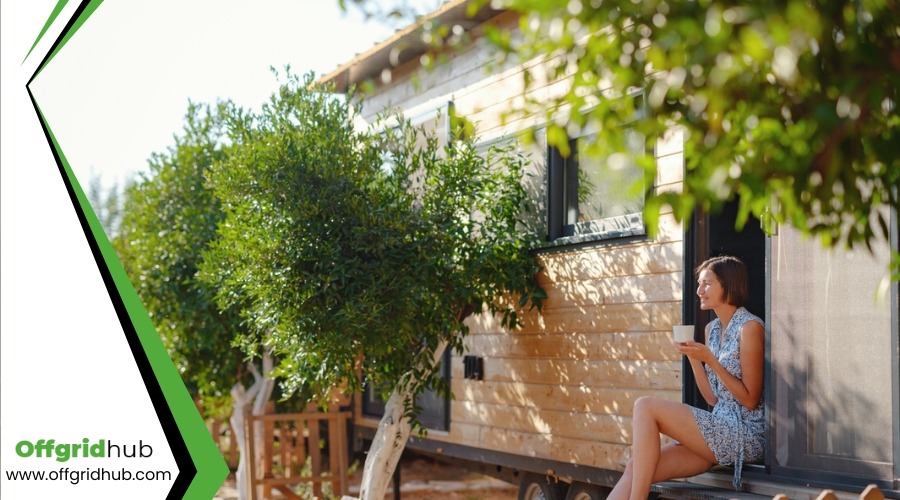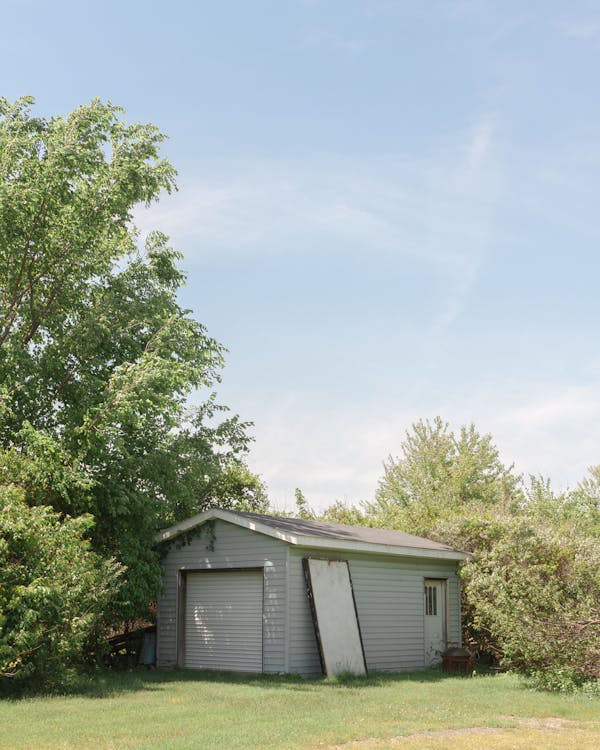Embarking on the journey of tiny home living is akin to planting a seed in a small pot. Both require meticulous care, strategic planning, and a willingness to adapt to confined spaces. You’ll find yourself navigating the tight corridors of zoning laws, the financial hurdles of securing a loan for something banks rarely understand, and the art of decluttering your life to fit into a space that demands minimalism.
Yet, the rewards bloom in forms of financial freedom, a lower carbon footprint, and a community of like-minded individuals. Let’s explore how this minimalist lifestyle could reshape your world, inviting both challenges and unexpected joys.
The Lure of Minimalism
Embracing minimalism in tiny home living, you’re pushed to intentionally consume and declutter, highlighting the beauty of simplicity and the essence of prioritizing meaningful experiences over possessions. In the compact space of 100 to 400 square feet, every item you choose to keep must serve a purpose or bring you joy, underscoring the minimalist mantra. This lifestyle isn’t just about downsizing physically; it’s a mental shift towards valuing what truly matters.
The journey into minimalism through tiny home living alleviates the financial burden that often accompanies larger living spaces. You’re not just decluttering your space; you’re decluttering your finances, too. This freedom from financial strain opens up avenues to invest in experiences that enrich your life, rather than accumulating material goods that soon lose their luster.
Moreover, the act of decluttering itself can be profoundly liberating. It’s a process of letting go of the extraneous and focusing on cultivating a space that reflects your most cherished values. This focus on simplicity and intentionality in consumption brings a sense of freedom and joy that’s hard to find in a consumer-driven world.
Navigating Zoning Laws
While exploring the tiny home lifestyle, you’ll quickly run into the complex world of zoning laws, which can significantly impact where and how you can live in your compact dwelling. Zoning laws vary by location and may not always permit tiny homes as primary residences. This variation can make finding the right spot for your tiny home a real puzzle. As a tiny home owner, you’re tasked with navigating zoning laws to ensure your living situation doesn’t run afoul of local regulations.
Consider the following challenges:
- Understanding local laws to avoid legal issues related to zoning and building codes.
- Finding suitable land that complies with zoning requirements for tiny homes.
- Complying with building codes which may not always recognize tiny houses as private dwellings.
- Securing a spot for your tiny home as a primary residence amidst varying state recognitions.
Navigating zoning requires diligence and a proactive approach. You must stay informed about local laws and zoning requirements to make your tiny home dream a reality without legal complications. The journey towards tiny home living involves more than just downsizing; it’s about understanding and adhering to the legal landscape that governs where and how you can live.
Downsizing Your Life
Shifting to a tiny home lifestyle means you’ll need to pare down your possessions, fostering a more minimalist way of living. Downsizing isn’t just about getting rid of things; it’s a conscious decision to embrace space efficiency and reduce clutter. This journey towards a minimalist lifestyle might seem daunting at first, but it’s essential for creating a comfortable living environment in a smaller space. You’ll find that custom storage solutions become your best friend, allowing you to make the most out of every inch of your tiny home.
For individuals or childfree couples, the scale of downsizing can be more manageable, as fewer possessions and lifestyle adjustments are needed compared to families. However, regardless of your household size, purging excess belongings is a crucial step. It prevents your tiny home from feeling cramped and overwhelmed by clutter.
Establishing boundaries and cleanliness rules is particularly important when raising a family in a tiny space. It ensures that despite the limited square footage, you can maintain a comfortable living environment for everyone. Embracing this shift not only maximizes your home’s functionality but also enriches your life with simplicity and intentionality.
Financial Implications
Transitioning to tiny home living also means navigating the financial waters of securing a suitable loan, as traditional lenders often shy away from these smaller investments. Despite the obstacles, the surge in tiny home popularity has introduced several financing options you mightn’t have considered.
- Traditional lenders’ hesitance opens the door for alternative financing options like RV or trailer loans, which can be a perfect fit given many tiny homes’ mobile nature.
- Home equity loans offer another route, leveraging the value of your current home to finance your tiny home dream.
- Direct financing from tiny home builders, especially those spearheading community developments, can provide tailored solutions that understand the unique needs of tiny home buyers.
- The evolving market is gradually persuading banks to offer tiny home loans, reflecting the growing acceptance of tiny homes as a viable living option.
Working closely with local tiny home builders can’t only ease the financing process but also help you navigate the legal challenges associated with tiny home living. From understanding zoning laws to securing the right type of loan, these builders are invaluable resources in your journey towards downsizing.
Designing Small Spaces
Maximizing the utility of every inch is crucial when designing small spaces for tiny home living. In the world of tiny houses, where every square foot matters, you’ve got to think creatively to make your living space both functional and comfortable.
Innovative storage solutions, such as fold-down desks and hidden compartments, are your best friends, allowing you to transform a living area into a workspace in seconds.
Your furniture needs to work harder, too. Opt for multi-functional pieces like sofa beds and convertible dining tables to double the utility of your living areas without doubling the space required. Custom-built storage units and cabinets play a pivotal role as well, designed to fit your unique dimensions and maximize storage capacity in every nook and cranny.
Don’t overlook the importance of implementing space-saving techniques throughout your tiny home. Wall-mounted shelves and under-the-bed storage can declutter and organize your space, making it feel larger and more open. And remember to look up—utilizing vertical space with tall bookshelves, hanging organizers, and overhead storage can dramatically increase your storage options without infringing on your limited square footage.
In tiny home living, every inch counts.
Community Connections
While focusing on the interior design of tiny homes is crucial, it’s equally important to consider how these spaces impact your social life and community connections. Living in a tiny home often means grappling with the challenges of maintaining social connections, especially when situated in remote locations or facing community restrictions that limit your ability to entertain visitors. You might find yourself wrestling with feelings of isolation, which can take a toll on your mental well-being.
Despite these challenges, the tiny home movement’s growth signals a strong desire for community connections among tiny house residents. Here are ways to foster these vital links:
- Organizing community events in shared outdoor spaces to encourage mingling and friendships.
- Designing communal amenities such as gardens or kitchens where residents can gather and interact.
- Creating online forums or social media groups for residents to plan meetups, share advice, and support each other.
- Implementing innovative design solutions in tiny home communities to maximize communal spaces and enhance the sense of community.
Building a thriving community in a tiny home setting requires creativity and effort, but the rewards of strengthened social connections and a sense of belonging are invaluable.
Embracing Mobility
Exploring new locations becomes effortless with the mobility that tiny homes on wheels offer, granting you the freedom to redefine ‘home’ as often as you desire. This unique aspect of tiny home living doesn’t just mean you’re choosing a smaller space; you’re also opting for a life filled with adventure and the flexibility to travel. Imagine waking up to a new view whenever you wish, with the comfort of your own home right there with you.
The allure of mobility in tiny homes lies not just in the travel itself but in the adaptable living experience it provides. You’re not tied down to a single location, giving you the unprecedented ability to explore new environments and immerse yourself in various communities and lifestyles. This adaptability is perfect for those who crave change or simply want the option to relocate without the hassle of traditional moving processes.
Tiny homes on wheels embody the essence of adventurous living, offering a seamless blend of mobility, flexibility, and the unique opportunity to design a life that moves with you. Whether you’re drawn to the mountains one month or the coast the next, your home is as mobile and adaptable as your spirit desires.
Environmental Impact
Living in a tiny home significantly reduces your environmental footprint, making it a smart choice for eco-conscious individuals. The compact size of a tiny home naturally demands less in terms of materials and energy for heating and cooling, aligning perfectly with environmentally friendly living. You’re not just choosing a place to live; you’re embracing a commitment to sustainable living.
Here’s how tiny homes make a big impact with their small environmental footprint:
- Energy efficiency skyrockets with the use of energy-efficient appliances and less space to heat and cool, slashing energy consumption by over 54% compared to traditional houses.
- Off-the-grid capabilities allow for the integration of solar panels and composting toilets, ensuring your home doesn’t just take from the environment but gives back by harnessing renewable resources.
- Eco-friendly choices become second nature, including rainwater harvesting systems that further reduce your reliance on municipal services and promote sustainability.
- Adoption of sustainable practices like recycling, reducing waste, and minimal consumption is encouraged by the limited space, making environmentally conscious decisions an integral part of daily life.
Overcoming Isolation
One challenge you might face with tiny home living is the potential for social isolation, especially when settled in more remote locations to skirt community regulations. This isolation isn’t just about being physically alone; it’s about the difficulty in maintaining social connections. Being far from amenities and neighbors can strain your efforts to stay connected, impacting not only your mental well-being but also your overall quality of life.
Despite these challenges, the tiny home movement is on the rise, highlighting a growing demand for alternative housing options. This indicates a collective desire to find solutions, including overcoming isolation. To improve your quality of life in a tiny home, actively seeking ways to foster social connections is crucial. Engaging with local communities, participating in tiny home movement gatherings, or using digital platforms to stay connected can mitigate feelings of isolation.
Conclusion
In embracing tiny home living, you’re choosing a minimalist lifestyle that’s both challenging and rewarding. You’ll navigate zoning laws, downsize drastically, and creatively design your space, all while managing finances carefully. Yet, the payoff is immense: lower bills, a tighter community, the freedom to move, and a smaller carbon footprint.
Overcoming potential isolation, you’ll find a sense of belonging and purpose. Tiny home living isn’t just about downsizing your space—it’s about upsizing your life’s quality and meaning.


